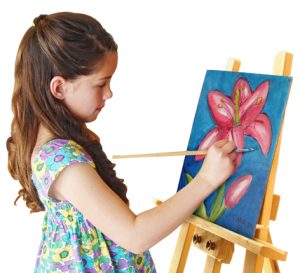The art scene today is very saturated. Artists are everywhere and most of them are either in for the money, fame or both. So which type of artist are you? The thing is, it really is immaterial because everything is done in the name of art.
As an artist, there are a few things which you must consider
The first and most important one is that you are an artist because of your passion. Whether it is graphic, fine or performing arts, this is something which you truly enjoy doing and one which you would not mind doing for the rest of your life and at the same time you would want to share it with others. That is the main objective.
There is no reason to create a painting only for your own satisfaction.
If you have created a series of paintings, then the rightful thing to do next is to have your work seen by the public. So that is you wanting to be famous.
And then, you have to consider that being an artist comes with a cost
It is also about survival. If you have a full time job and have the time to indulge in your art, then it would be most ideal.
But in today’s environment, full time jobs meant you are in it almost all the time, which leaves you with very little time for yourself and your art. Hence, some artists decide to go ‘full time’ which means that they will have to sell in order to have an income. Artists are human after all and food needs to be laid on the table. Hence, selling art becomes a tool for survival. This is you wanting to make money.
The conundrum in these situations is that if you are too ‘selling’ some would accuse you of having ‘sold out’ to commercialization
But if you are on the other side of the spectrum, you might find yourself suffering in terms of survival and well-being. So what should you do?
Perhaps the biggest challenge here is to find a balance between selling out and not doing so
The ideal situation here is to be able to survive with a proper income from your art while delivering your best works to the collectors and fans.
If you are a full time artist, you must be able to plan your finances very well because you have to survive for the months to come. The best way to do this is to have a series of ‘sellable’ work which you know will do well in the market and those which you think might not be too commercial. Sellable work here refers to work which are not overly expensive as well as aesthetically pleasing (looks good on walls, etc).
You must know your market and what type of art work garners well with collectors, then you will know which direction to move from there. That way, you will be able to achieve the balance which you will need to both survive and to continue to deliver your passion.
Copyrights article by Arts.com.my



